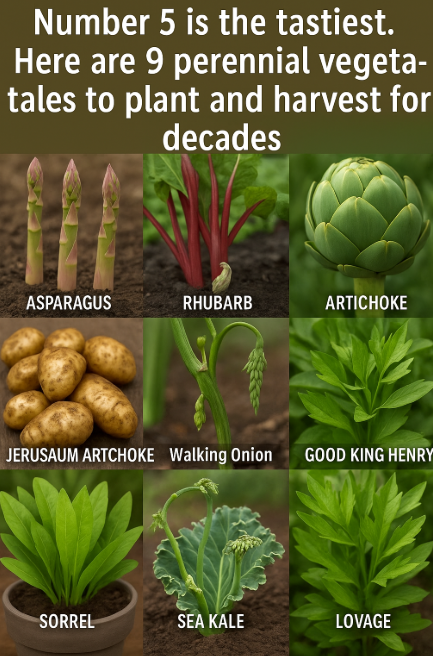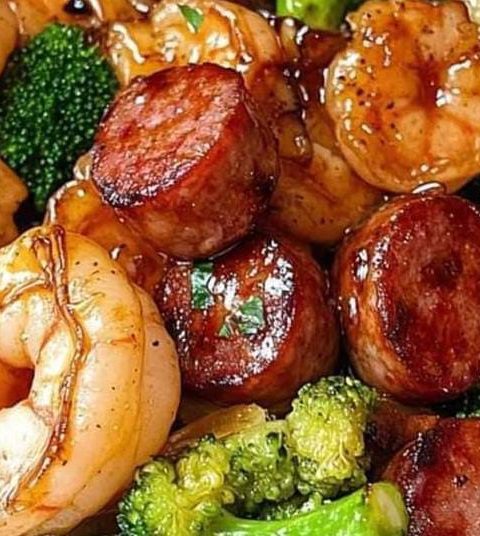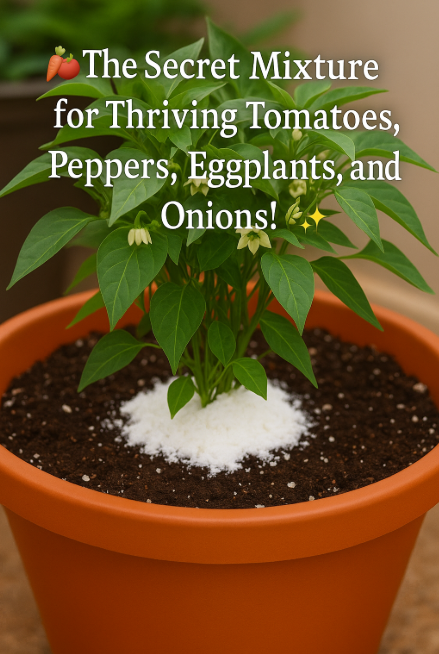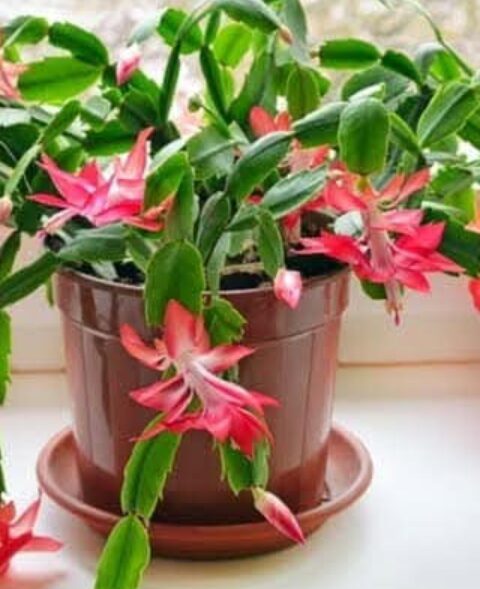🌱 9 Perennial Vegetables to Plant Once and Harvest for Decades
Tired of replanting every spring? These nine perennial vegetables will return year after year—some for decades—providing you with fresh, homegrown produce with minimal effort. From classic asparagus to surprising walking onions, discover which perennials belong in your garden, how to grow and maintain them, and expert tips for maximizing yield and longevity. Plus, find delicious recipe inspiration at Canadian Ed Shop.
📋 Quick List of the 9 Perennials
- Asparagus (Asparagus officinalis)
- Rhubarb (Rheum rhabarbarum)
- Globe Artichoke (Cynara scolymus)
- Jerusalem Artichoke / Sunchoke (Helianthus tuberosus)
- Walking Onions / Egyptian Onions (Allium × proliferum)
- Good King Henry (Blitum bonus-henricus)
- Sorrel (Rumex acetosa)
- Sea Kale (Crambe maritima)
- Lovage (Levisticum officinale)
🌟 Why Grow Perennial Vegetables?
Perennial vegetables offer:
- Long-term yield: Plant once and harvest for years—saving time and seed costs.
- Soil health: Deep roots improve structure, reduce erosion, and feed beneficial microbes.
- Early harvest: Many perennials emerge before annuals, giving you a head start on fresh produce.
- Low maintenance: Established beds require less weeding and replanting.
1. Asparagus (Asparagus officinalis)
Planting Tips
Choose a sunny, well-drained site. Prepare a trench 12–18″ wide and 8″ deep, amended with compost. Space crowns 12–18″ apart. Backfill with soil over several weeks as shoots emerge.
Harvest Guidelines
Wait 2–3 years before harvesting to allow crowns to establish. In years 3+, harvest spears 6–8″ tall for 4–6 weeks each spring. Avoid cutting after June to preserve fern growth.
Longevity & Care
With proper care—annual compost top-dress and mulch—your asparagus bed can produce for 20+ years. Remove ferns in late fall and apply balanced fertilizer in early spring.
Expert Insight
“A well-maintained asparagus patch is the gift that keeps on giving—treat it like an orchard rather than an annual garden.” – Lisa Mason, Vegetable Grower
Design Idea
Plant asparagus at the back of a perennial border—its tall ferns provide summer interest and hide less attractive crops.
2. Rhubarb (Rheum rhabarbarum)
Planting Tips
Select a site with rich, acidic soil (pH 6.0–6.8) and full sun to partial shade. Plant crowns 2–3″ deep, 3–4′ apart. Mulch heavily to retain moisture.
Harvest Guidelines
Allow the first season for establishment. In year two, harvest stalks by pulling and twisting. Stop harvest by midsummer to allow leaf growth and crown strength.
Longevity & Care
Rhubarb thrives for decades with annual compost and winter mulch. Divide clumps every 8–10 years to rejuvenate and propagate.
Expert Insight
“Rhubarb is virtually indestructible—once you’ve got it established, it’s a perennial staple.” – Mark Cullen, Horticulturist
Design Idea
Use ruffled rhubarb leaves to create a tropical effect in shady corners of edible gardens.
3. Globe Artichoke (Cynara scolymus)
Planting Tips
Start from divisions or seedlings in spring after frost. Space 4–5′ apart in fertile, well-drained soil. Provide wind protection and full sun.
Harvest Guidelines
Harvest tight buds before scales open. Cut stems about 3–5″ below the bud. In warm regions, expect multiple harvests in year one; in colder zones, treat as a tender perennial.
Longevity & Care
With winter protection (mulch or frost cloth) and regular fertilization, artichokes can produce for 5–7 years in temperate climates.
Expert Insight
“Artichokes are a statement plant—both edible and ornamental, they reward you with stunning architecture and flavor.” – Ornamental Edibles Collective
Design Idea
Frame entryways or patios with artichoke clumps for a dramatic edible architecture.
4. Jerusalem Artichoke / Sunchoke (Helianthus tuberosus)
Planting Tips
Plant tubers 3–4″ deep, 12–18″ apart, in full sun or light shade. Use well-drained soil; minimal fertility required. Beware vigorous spread.
Harvest Guidelines
Dig tubers after first frost when tops die back. Leave small tubers for natural reseeding or harvest all and replant select pieces.
Longevity & Care
Sunchokes naturalize quickly—contain in deep beds or root barriers. Divide clumps every 2–3 years to prevent overcrowding.
Expert Insight
“Sunchokes thrive on neglect—ideal for low-maintenance gardens craving a nutty, inulin-rich tuber.” – Doug Green, Permaculture Designer
Design Idea
Create a screening hedge of sunchokes along fences—cut back in fall for winter interest.
5. Walking Onions (Allium × proliferum)
Planting Tips
Plant bulbs or top-sets 1″ deep in fall or early spring, 6″ apart. Full sun and fertile, well-drained soil yields best growth.
Harvest Guidelines
Harvest small bulbs from top-sets year-round; use young greens like scallions. The “walkers” will produce new sets in surrounding soil.
Longevity & Care
Walking onions self-propagate indefinitely—lift and replant as needed to manage spread. Mulch in winter.
Expert Insight
“Walking onions are the ultimate self-perpetuating vegetable—no replanting required.” – Seed Savers Exchange
Design Idea
Border perennial beds with walking onions for both edible harvest and decorative seed heads.
6. Good King Henry (Blitum bonus-henricus)
Planting Tips
Sow seeds or divisions in spring in partial shade to full sun. Space 12–18″ apart in fertile, moist soil.
Harvest Guidelines
Harvest young leaves in spring and early summer, similar to spinach. Cut stems to ground level to encourage regrowth.
Longevity & Care
This historic kitchen garden plant persists for 10+ years. Divide every 5 years to maintain vigor and manage pests.
Expert Insight
“An underappreciated green, Good King Henry combines the best of spinach and Swiss chard.” – Heirloom Harvest Group
Design Idea
Include Good King Henry in shade borders—its upright habit contrasts with mounding perennials.
7. Sorrel (Rumex acetosa)
Planting Tips
Plant in spring or fall in well-drained soil with partial shade. Space plants 12″ apart; tolerates light frost.
Harvest Guidelines
Harvest leaves continuously by snipping outer leaves; avoid removing more than one-third at a time to sustain growth.
Longevity & Care
Sorrel returns reliably for 5–7 years. Divide clumps in early spring to rejuvenate and control size.
Expert Insight
“Sorrel’s lemony tang livens salads and soups—an unbeatable perennial green.” – Culinary Herb Society
Design Idea
Edge herb gardens with sorrel for continuous early-spring harvest and vibrant color contrast.
8. Sea Kale (Crambe maritima)
Planting Tips
Plant crowns in spring, 18–24″ apart, in sandy, well-drained soil with full sun. Provide support for shoots if needed.
Harvest Guidelines
Blanch shoots in early spring by covering mounds with soil or cloches. Harvest tender shoots before leaves unfurl; leaves and flower buds edible later.
Longevity & Care
Sea kale thrives for 20+ years with minimal care. Divide every 10 years to maintain productivity and vigor.
Expert Insight
“Sea kale bridges vegetable and perennial borders—blanched shoots are a springtime delicacy.” – Coastal Gardeners Association
Design Idea
Use sea kale as a coastal-themed focal point—its large blue-green leaves contrast with ornamental grasses.
9. Lovage (Levisticum officinale)
Planting Tips
Start seeds indoors or sow in spring. Transplant outside in full sun to partial shade, spacing 18–24″ apart in fertile soil.
Harvest Guidelines
Harvest leaves and stems throughout the growing season. Cut flowers in early summer for edible umbels and seed.
Longevity & Care
Lovage is exceptionally long-lived, often thriving 10–15 years with seasonal division to maintain health.
Expert Insight
“Lovage’s celery-like flavor is invaluable in soups and stews—an heirloom perennial favorite.” – Herb Society of America
Design Idea
Plant lovage near vegetable beds—its height (up to 6′) adds vertical structure and aromatic fragrance.
🌿 Troubleshooting Common Issues
- Poor Establishment: Check soil drainage and fertility; amend with compost and ensure proper bed preparation.
- Pest Pressure: Use floating row covers for young shoots; apply organic neem or insecticidal soap if needed.
- Overcrowding: Divide perennials when crowded; maintain recommended spacing to avoid competition.
- Winter Damage: Apply mulch or straw for cold-sensitive perennials in USDA zones < 5.
💡 Garden Design & Companion Planting
Combine perennials with seasonal annuals—tall artichokes and lovage provide backdrop for low-growing sorrel and walking onions. Use rhubarb and sea kale as structural elements alongside flowering perennials.
❓ Frequently Asked Questions
- How do I divide perennial vegetables?
Best in early spring or fall—dig up clump, separate crowns with a sharp spade, and replant divisions immediately. - Can I grow these perennials in containers?
Yes—opt for large pots (15+ gallons) for deep-rooted crops like asparagus and sea kale. Ensure drainage and fertile mix. - How often should I fertilize perennial beds?
Apply compost or balanced organic fertilizer in early spring and mid-summer for sustained growth. - Will walking onions take over my garden?
They can spread vigorously; contain in beds or lift and replant top-sets to control. - How do I harvest rhubarb without harming crowns?
Pull stalks gently from base; avoid cutting too close to soil to protect meristem. - Can artichokes survive frost?
Globe artichokes are hardy to zone 7; in colder areas, mulch heavily or lift crowns for winter storage. - What soil pH do these perennials prefer?
Generally 6.0–7.0; test and amend with lime or sulfur to adjust. - How do I start a perennial vegetable bed?
Choose site, prepare deep, fertile soil, plant crowns/seeds/divisions in recommended spacing, mulch. - Are these vegetables deer-resistant?
Good King Henry and walking onions are less palatable; others may require fencing or repellents. - What companion plants work well?
Marigolds repel pests; clover or vetch add nitrogen; herbs like thyme attract pollinators.
1. Asparagus (Asparagus officinalis)
Health Benefits & Elderly Impact: Asparagus is rich in folate, vitamins A, C, and K, and the prebiotic inulin, which supports digestive health and a balanced gut microbiome. Its high antioxidant content helps reduce inflammation and oxidative stress, contributing to cardiovascular health. For older adults, regular asparagus consumption can support bone strength (via vitamin K), aid digestion, and help maintain healthy blood pressure. Plant asparagus in deep, well-drained soil with full sun exposure; its robust crowns tolerate drought once established, making it easy for seniors to maintain without intensive daily care.
2. Rhubarb (Rheum rhabarbarum)
Health Benefits & Elderly Impact: Rhubarb stalks are an excellent source of vitamin K, fiber, and calcium, promoting strong bones and improved gastrointestinal function. Their natural laxative properties can aid in relieving constipation—a common concern for older individuals. Rich in antioxidants such as anthocyanins, rhubarb may also help protect against age-related cognitive decline. Rhubarb thrives in sunny to partially shaded spots with rich, moist soil; its perennial nature reduces the need for annual planting, easing the workload for elderly gardeners.
3. Globe Artichoke (Cynara scolymus)
Health Benefits & Elderly Impact: Globe artichokes are packed with dietary fiber, vitamins C and K, and the phytonutrient cynarin, which supports healthy liver function and cholesterol management. The soluble fiber in artichokes helps regulate blood sugar and promotes heart health by lowering LDL cholesterol. For seniors, incorporating artichokes into the diet can aid digestion, support cardiovascular wellness, and provide essential nutrients for maintaining muscle and bone health. These perennials prefer full sun and fertile, well-drained soil; with minimal winter protection, they return year after year, reducing garden chores for older growers.
4. Jerusalem Artichoke / Sunchoke (Helianthus tuberosus)
Health Benefits & Elderly Impact: Jerusalem artichokes are exceptionally high in inulin, a prebiotic fiber that fosters beneficial gut bacteria, aiding nutrient absorption and supporting immune function. They also contain potassium and iron, which help regulate blood pressure and prevent anemia. For older adults, sunchokes can improve digestive health and energy levels. Thriving in full sun to light shade and adaptable to poor soils, these vigorous perennials spread readily—contain them in raised beds to simplify care and minimize bending.
5. Walking Onions (Allium × proliferum)
Health Benefits & Elderly Impact: Walking onions offer the health-promoting compounds of the Allium family: allicin, which has antibacterial properties, and sulfur compounds that support cardiovascular health by reducing cholesterol and blood pressure. Their mild flavor makes them easy to digest, and their greens provide fresh vitamins A and C. For seniors, the ease of harvesting top-sets at standing height helps prevent back strain. Plant these perennials in fertile, sunny spots; their self-propagating nature ensures a continual, low-effort supply.
6. Good King Henry (Blitum bonus-henricus)
Health Benefits & Elderly Impact: Good King Henry leaves are rich in vitamins A, C, and iron, supporting vision, immune health, and red blood cell production. Their mild, spinach-like flavor is easily incorporated into soups and stews. The plant’s robust nature and tolerance for partial shade make it ideal for low-maintenance gardening, reducing physical strain for older growers. Good King Henry thrives in fertile, consistently moist soil and returns reliably each spring, providing a dependable source of greens.
7. Sorrel (Rumex acetosa)
Health Benefits & Elderly Impact: Sorrel is a potent source of vitamin C, antioxidants, and dietary fiber, aiding collagen production, supporting immune function, and promoting healthy digestion. Its natural oxalic acid content provides a refreshing tang but should be consumed in moderation to prevent kidney stone risk. For seniors, sorrel’s early spring emergence offers fresh nutrients after winter. It flourishes in well-drained, slightly acidic soil with partial shade, requiring minimal upkeep and cutting back of older leaves to stimulate continuous growth.
8. Sea Kale (Crambe maritima)
Health Benefits & Elderly Impact: Sea kale provides an array of nutrients: vitamins A, C, and K, calcium, and dietary fiber—supporting bone health, vision, and digestive regularity. Its young shoots and leaves contain glucosinolates, which have been studied for their cancer-protective effects. Hardy to coastal conditions, sea kale prospers in sandy, well-drained soil with full sun, making it a resilient, long-lasting choice for gardeners seeking low-maintenance crops that enrich seniors’ diets and garden experiences.
9. Lovage (Levisticum officinale)
Health Benefits & Elderly Impact: Lovage is rich in vitamin C, potassium, and volatile oils that aid digestion, reduce bloating, and support heart health. Its celery-like flavor enhances soups and salads, encouraging appetites in older adults who may have diminished taste sensations. Lovage thrives in rich, moist soil with partial shade and full sun, growing into a tall, architectural herb that requires minimal division—ideal for elderly gardeners seeking both culinary utility and garden structure.
🔗 Related Recipes & Resources
🚀 Conclusion
Plant these nine perennial vegetables once and enjoy decades of harvests, flavor, and garden structure. With proper planning, care, and occasional troubleshooting, your perennial bed will become a self-renewing source of fresh produce—and a living legacy for seasons to come. Happy gardening!






